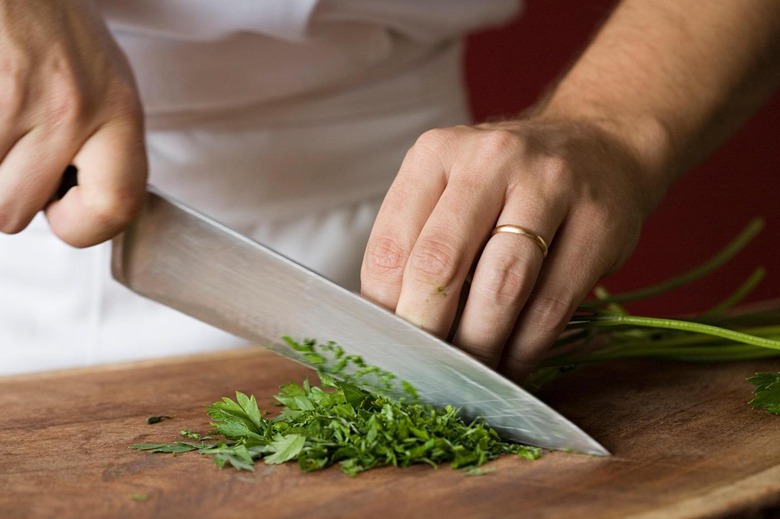For kitchen professionals, mastering the art of cutting with precision and efficiency is paramount. At the heart of this mastery lies the knowledge of German knives and cutting techniques. These knives are renowned for their robustness and exceptional functionality, making them a staple in professional kitchens worldwide. Understanding the nuances of these tools can elevate the culinary experience, ensuring precision in every slice and dice.
German knives are crafted with meticulous attention to detail, utilizing high-carbon stainless steel to offer durability and a keen edge. The ergonomic design of these knives provides a comfortable grip, allowing chefs to execute complex cuts with ease. The balance and weight of German knives are engineered to reduce fatigue, enabling prolonged use without compromising efficiency. Their versatility is unmatched, handling everything from delicate herbs to robust root vegetables with finesse.

The Craftsmanship Behind German Knives
The allure of German knives lies in their superior craftsmanship. Renowned brands like Wsthof and Zwilling J.A. Henckels have set the benchmark for quality, employing centuries-old techniques to produce knives that are both beautiful and functional. The blades are precision-forged, undergoing rigorous quality control processes to ensure each knife meets the highest standards. This commitment to excellence is what distinguishes German knives from their counterparts.
The full tang construction of these knives ensures balance and stability, crucial for executing precise cuts. The bolster, a hallmark of German knives, offers added weight and protection, enhancing control and safety. The attention to detail extends to the handle, often crafted from durable materials like polypropylene or POM, designed to withstand the rigors of professional kitchens. Learn more about the German knife weight guide to understand how balance impacts your cutting technique.
Essential German Cutting Techniques
Mastering cutting techniques is as crucial as the knife itself. German knives are designed to perform a variety of cutting techniques essential for any professional chef. From the classic slice to more intricate cuts like chiffonade and julienne, each technique requires precision and practice.
The rock chop technique, often used with German chef knives, involves a steady rocking motion that utilizes the knife's curved blade. This method is perfect for chopping herbs and vegetables quickly and efficiently. The slicing technique, ideal for meat and poultry, leverages the knife's weight and sharp edge to produce clean cuts with minimal effort.
For those who prepare a lot of seafood or meat, understanding the use of a German boning knife can significantly improve your skills. These knives are specifically designed for precision tasks, such as removing bones and filleting fish, requiring a keen eye and steady hand.
Maintenance and Care of German Knives
The longevity of German knives is directly related to their maintenance. Regular honing and sharpening are essential to maintain the blade's edge. A honing steel can realign the edge, while periodic sharpening with a whetstone or professional service can restore its sharpness.
Proper cleaning is equally important. It's recommended to hand wash German knives with mild detergent and dry them immediately to prevent rust and corrosion. For more detailed care tips, you can refer to Wusthof's knife cleaning guide.
Choosing the Right German Knife
With various types available, selecting the right German knife can be daunting. Each knife has its purpose, from the versatile chef's knife to the specialized paring or bread knife. Consider your cooking style and the tasks you frequently perform when choosing a knife. A well-rounded collection might include a chefs knife, a utility knife, and a serrated knife.
For chefs looking to expand their collection, exploring the variety of knives can provide insights into which tools best suit their needs. Consider visiting German knives for meal prep to discover more about the available options.
In conclusion, the mastery of German knives and cutting techniques is an invaluable skill for kitchen professionals. These knives, with their superior craftsmanship and versatility, are essential tools that enhance the culinary experience. By understanding their design, mastering cutting techniques, and maintaining them properly, chefs can achieve the precision and efficiency required in professional kitchens.

FAQs
What makes German knives unique compared to other types?
German knives are renowned for their durability, balance, and versatility. They are typically made from high-carbon stainless steel and feature a full tang construction with a protective bolster.
How often should I sharpen my German knives?
It depends on usage, but generally, you should hone your knives after every few uses and sharpen them every 1-2 months to maintain their edge.
Can I use German knives for all types of cutting techniques?
Yes, German knives are versatile and can be used for a wide range of techniques, from chopping vegetables to slicing meat. However, using the right knife for the right task is important to achieve the best results.


























